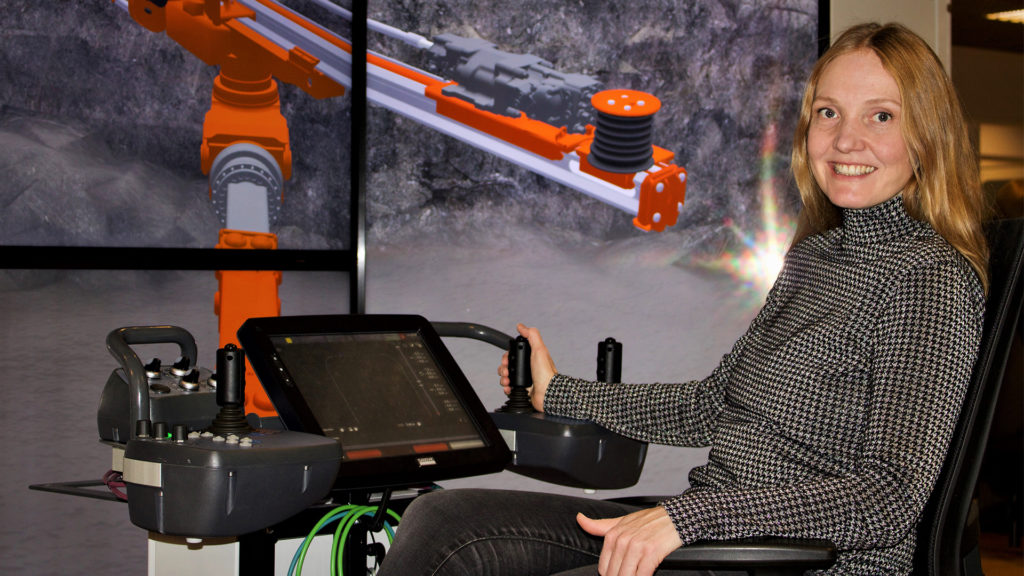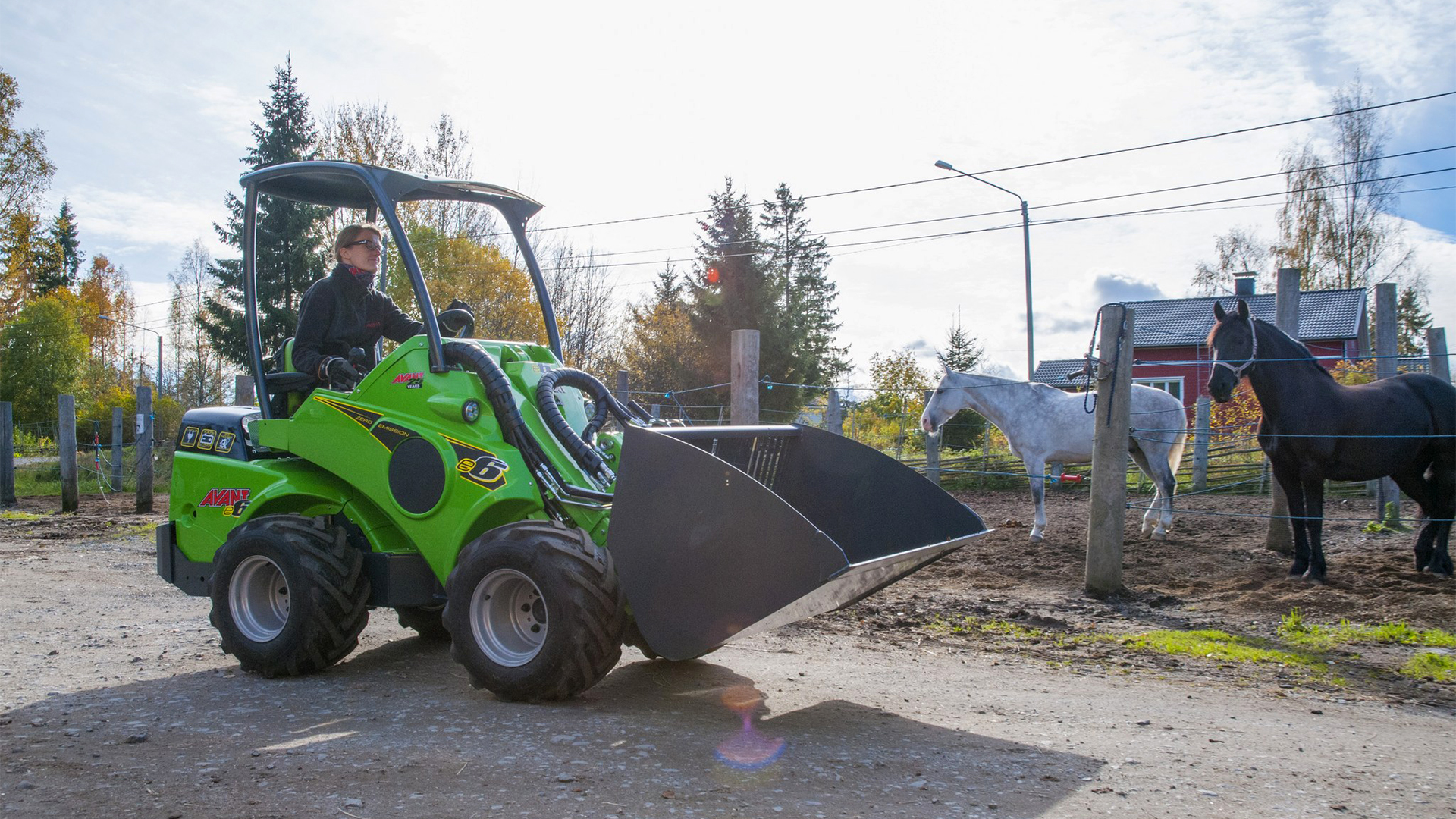The smartest mobile machines in Europe come from Tampere
19.12.2019
Does the idea of a self-driving car amaze you? Intelligent machines are nothing new. They’re already in use in a number of industries such as mining, forestry and agriculture, where they perform much more complex tasks in more challenging conditions. Tampere is at the forefront of the smart mobile machine industry, thanks to the region’s engineering expertise, deep knowledge of client needs, continuous research and development and decades of experience.
Finland manufactures about 30-40% of all forest machinery and 20-30% of mining machinery globally. The same percentages also apply to machines use in port areas. Tampere has emerged as the centre of mobile machinery, home to world class names such as Sandvik, John Deere, Ponsse and Metso Minerals.
Sirpa Launis wears two hats: one as Sandvik's Research Manager and the other as Chairman of the Board of the Finnish Forum for Intelligent Machines (FIMA).
“International companies large and small have always been in Tampere. The role that the local University of Technology, other technical colleges and the VTT Technical Research Centre play in the success of companies cannot be underestimated. Apart from the fact that the City of Tampere has always been industry-friendly, the level of expertise in the region is, to put it simply, very high,” Launis attests.
Expertise in mobile machinery is a point of pride for the community.
“Even while I was a student, there was an air of excitement. Tampere was a technology centre that attracted people who wanted to get involved. It continues to provide many opportunities for industry experts: in Machine Design, Automation, Electrical Engineering, Mechatronics, Software Engineering, Product Safety, Material and Manufacturing Technologies as well as in Technical Mechanics. These are sought after skills in the technology sector. This region needs people with different engineering and design expertise,” says Launis.
Intelligent, lightweight and low-emission
Mobile machinery are constantly taking on more and more of the heavy and dangerous work in industries. This means that even more Intelligence and autonomy are required, paving the way for the growing role of software technology.
“Software technology involves the development of components, such as sensors, probes and data transmission systems. At Sandvik, we’ve been recruiting more software experts in recent years. Keeping sensitive electronics working under harsh conditions requires new mechanical solutions, such as structural integration and vibration isolation,” Launis explains.
“We also need skilled professionals from abroad because Finland’s population is not growing. Tampere is in a way quite attractive for foreign workers, because it’s neither too big nor too small, and there are enough things happening here for recreation. I’ve travelled the world enough to know that we can and should invite foreigners to settle in Tampere. We need to constantly invest in our universities and higher institutes of learning. That would make it easy to attract students, who would then stay to work and live here. Compared to Helsinki, it is still possible in Tampere to get a reasonably-priced apartment close to the city centre. It’s one of the benefits of a city that’s just the right size.”
Another major development is electrification, which contributes to lighter builds.
“Alternatives to internal combustion engines are being sought. There is a drive to use clean energy and reduce local emissions. This naturally leads to the development of new knowledge areas such as battery technology. Machine structure also need to be more lightweight because of the shift to electric power and new material solutions are needed,” says Launis.
Green powerhouses
Avant Tecno Oy, which manufactures small loaders in Ylöjärvi, is an inspiring example of local production and development. 80 percent of the company's production are for export. Avant machines are known for their trademark green colour and they’re starting to use green in their power sources as well. The electric Avant e5 and e6 were released in 2016.
“We were the first in the world to launch a lithium-powered loader with the e6. So far, we have sold four hundred electric forklifts, with the demand highest in Northern Europe; but we have also delivered to as far away as New Zealand. Demand for electric machinery is growing especially because of new emission requirements set by legislation,” says Avant’s Sales Director Jani Käkelä.

Machine intelligence is also growing incrementally.
“Our products’ greatest competitive advantage has always been their ease of use and reliability. Our customers have appreciated simple motorization and engineering. Now, due to emission regulations and electrical performance, we’re incorporating more sensor technology into the machines, which we will utilise in many ways,” says Käkelä.
Today, users want to know everything about the lifecycle of the machine – from the design phase to end-of-life product disposal. Thanks to digitalisation, more and more usable data is available from the field.
Customer need at the heart of product development
One of the secrets behind the success of mobile machinery in Tampere is the region’s understanding of customer needs.
“We develop products that help the customer's business grow. Nowadays, this also means that we must be careful about commercialization. The efficient operation of the subcontracting chain is critical for Sandvik, for example, to be competitive,” Sirpa Launis points out.
“We listen to customers and develop products based on their needs. That we have developed 200 different implements for Avant loaders is a very good example of this. In addition to traditional buckets and brushes, the range also includes a beehive hoist and a mannequin. We want to solve the customer's everyday challenges,” says Jani Käkelä.
A strong network
Expertise in mobile machines develops not only within companies, but also through cooperation: among different companies or with educational institutions through joint projects. In her role as Chairman of FIMA's Board of Directors, Launis has a close-up view of how this unfolds.
“FIMA's key objective is to develop a system to encourage companies to jointly invest in long-term research and while also improving how public funds are disbursed. This includes supporting universities and finding long-term funding for university projects.”
In addition to FIMA, DIMECC and SMACC are two innovation platforms active in Tampere. The ecosystem hosted by DIMECC (Digital, Internet, Materials & Engineering Co-Creation) is made up of over 2000 R&D professionals and 400 organisations. SMACC (Smart Machines and Manufacturing Competence Centre), focuses on smart manufacturing and robotics research and services for businesses.
References:
Katsaus liikkuvien työkoneiden kehityspolkuun Suomessa (2018), white paper by Business Finland